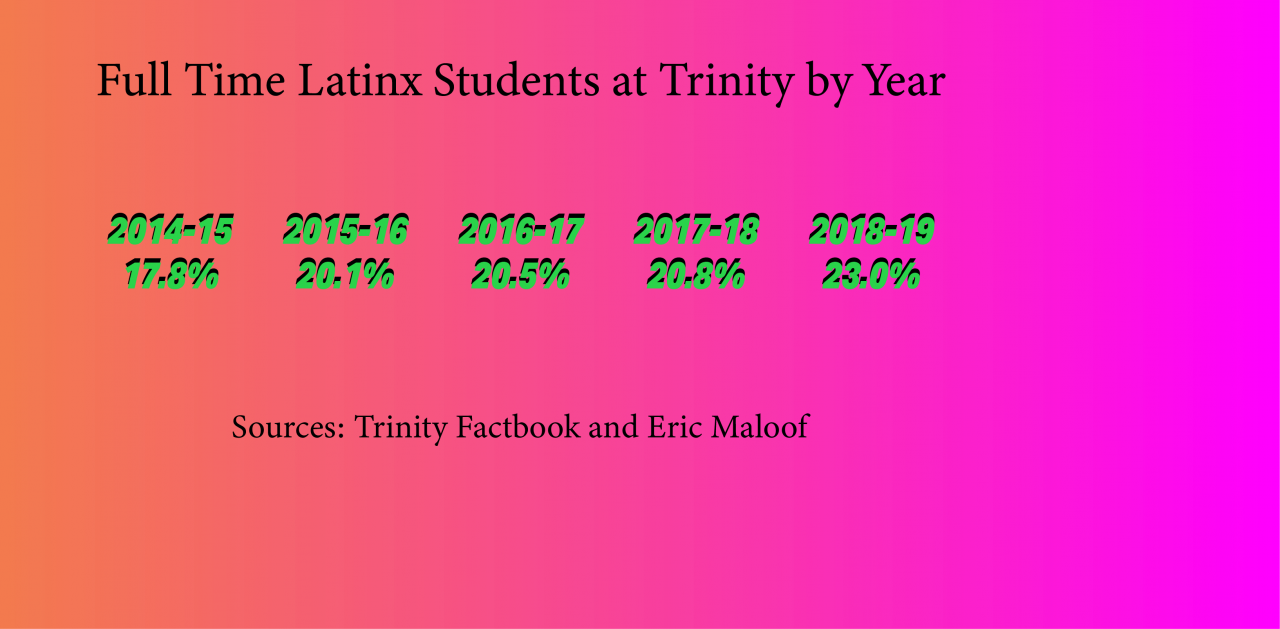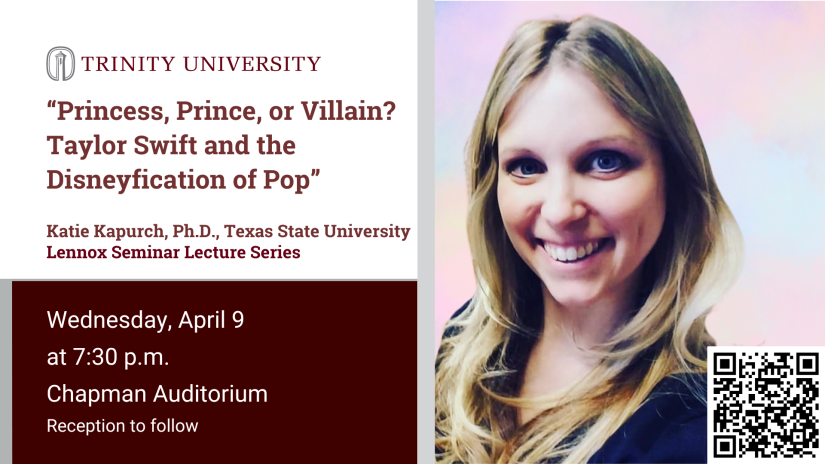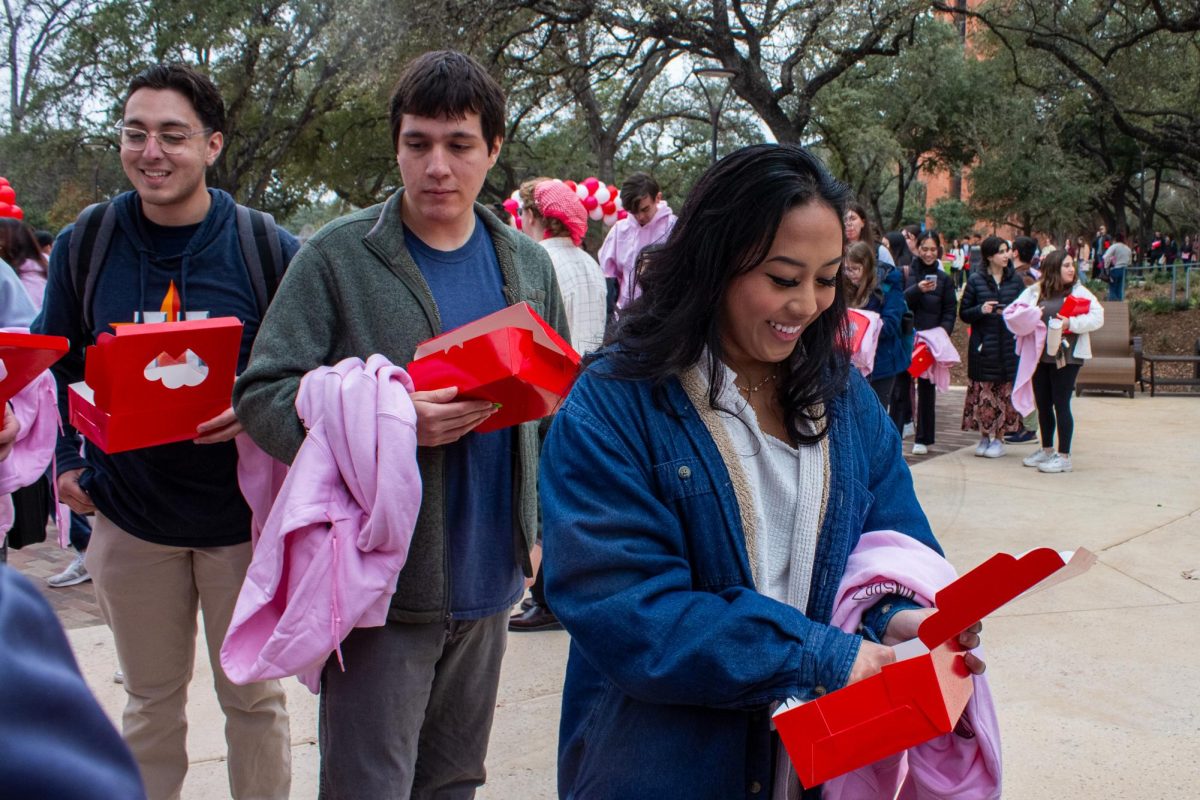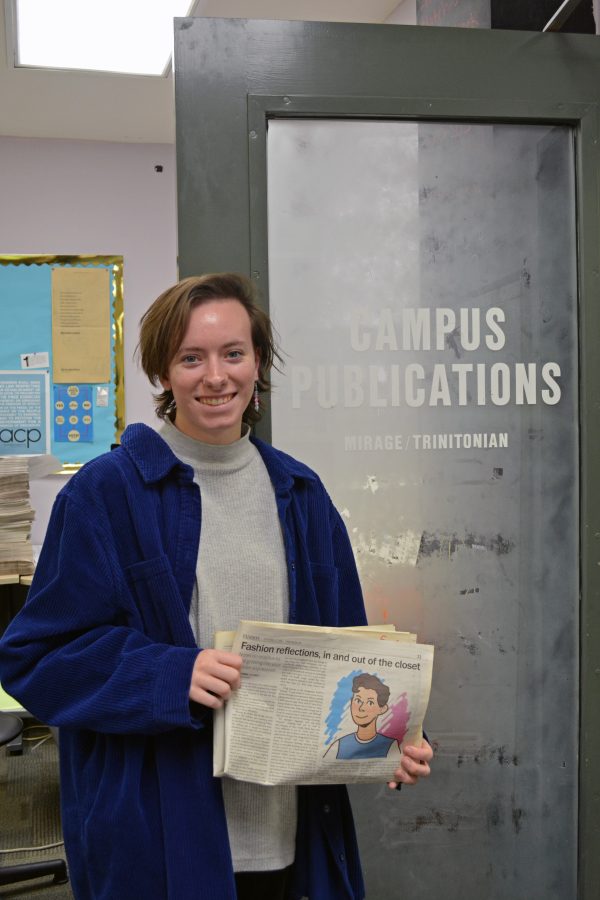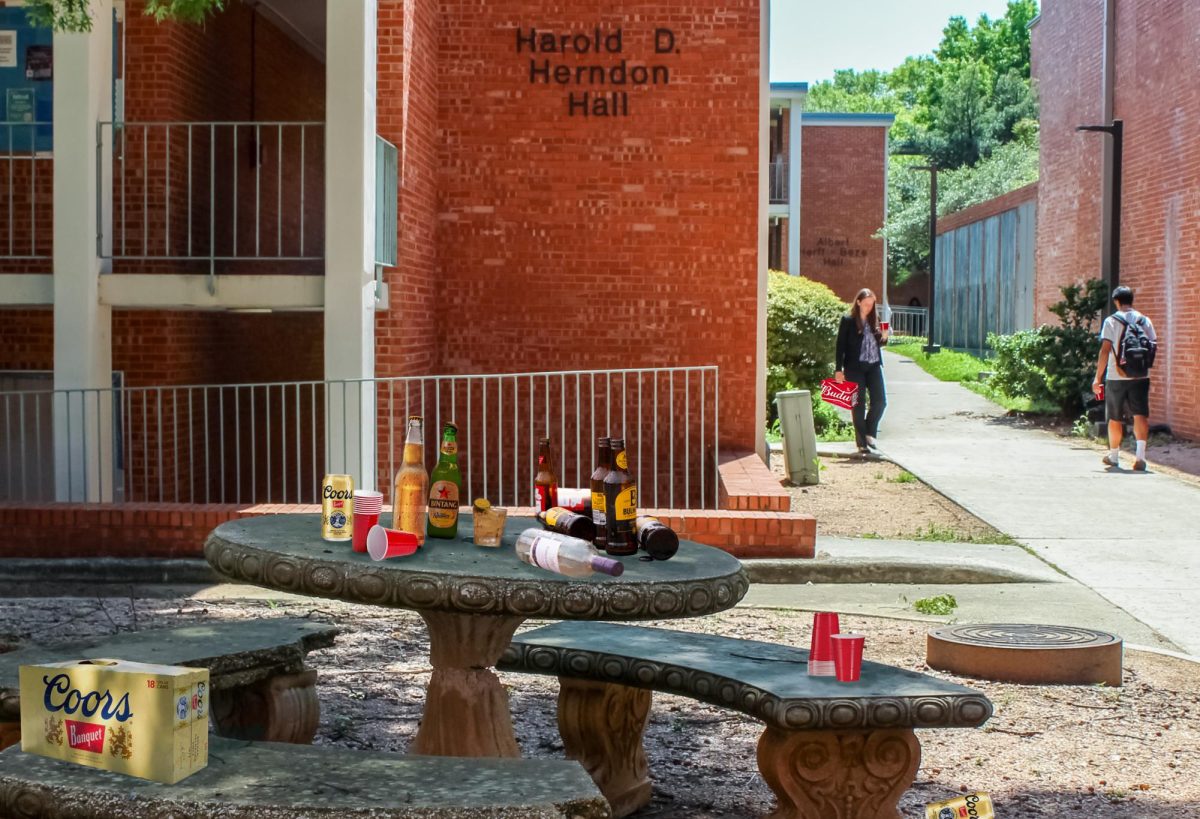Graphic by Quinn Butterfield
Trinity’s student body is currently two percentage points away from gaining Hispanic-Serving Institution status, prompting some to reflect on Trinity’s relationship with underrepresented groups.
Hispanic-Serving Institutions (HSIs) are federally-recognized higher education institutions with a student body that is comprised of 25 percent or more full-time Latinx students. When a university becomes an HSI, they can become eligible for federal funds which can be used for many academic purposes.
Since its founding in 1869, Trinity’s student population has been predominantly white. In the 2018–2019 academic year, 56.6 percent of students identify as white. According to Abreu-Torres, professor in the Department of Modern Languages and director of the Mexico, Americas and Spain program, there has been a shift within the last decade to create spaces for people of color at Trinity, with particular emphasis on students of Hispanic descent.
“I got here in 2010, and throughout the years, I’ve seen this population grow every year. When I started here, there were a few pockets here and there through the International Office, with Latin-American students coming from Honduras or Ecuador or Mexico,” Abreu-Torres said.
Eric Maloof, vice president for enrollment management, also noted the demographic shifts seen in recent admissions cycles.
“If you look at our applicant pool right now, if you include international students in this mix, about a third of our applicants today are Hispanic or Latino,” Maloof said.
Students of Hispanic and Latinx descent are involved in a variety of activities and academic departments, prompting some to call for more investment in programs aimed at academic success.
“Now that we have the attention of the community, we need to build different resources through academic excellence and the Writing Center, so they can envision themselves here. It’s not about creating new programs. It’s about strengthening the ones we have,” Abreu-Torres said.
“While it is important to recognize this demographic trend, Alli Roman, director of the Diversity and Inclusion Office, emphasized the importance of appreciating intersectionality within the Hispanic and Latinx experience at Trinity.
“Even within that 25 percent threshold, I don’t think there will be this monolithic experience of ‘this is what it means to be Latinx on campus.’ I think this is an important aspect while we are thinking about how are we going to be a Hispanic-serving institution and what that really means. When we approach Latinidad, that we are taking into account that there is no one right way to be Latinx,” Roman said.
According to Maloof, this gradual demographic shift is reflective of Trinity’s efforts to embrace the existing diversity seen in San Antonio and surrounding areas.
“Because of our location and our proximity to other major metropolitan areas that are very diverse, that naturally attracts a diverse student body. We are really working hard, and we become known as a place that fosters that diversity,” Maloof said.
Abreu-Torres also noted the demographic shift that has taken place within the last decade, especially in relation to Trinity’s Hispanic and Latinx population.
“In comparison to other institutions [Trinity] has had to move quickly. A lot of people would say it’s not quick enough, but I think it’s been quick — I’ve been here only nine years. Admissions has been doing a really good job of reaching out to all the different populations, so that’s definitely a plus,” Abreu-Torres said.
There is a push from some at Trinity to create networks within the university that allow Latinx students to collaborate and draw from each other’s experiences.
“My hope is to provide opportunities for affinity circles, so really providing students with the opportunity to come together based off of a shared identity, to be able to have the space to talk with one another,” Roman said.
While Trinity has made strides towards a more diverse student body, many can agree that there is still work to be done.
“While we are really proud of how diverse this institution has become over time, all of us know that we have so much further to go. Diversity is complicated, it’s personal, it’s nuanced. Diversity means different things to different people,” Maloof said.
Abreu-Torres believes that this recognition would bring more opportunities to the Latinx community at Trinity.
“I think that Trinity taking this step to promote itself, to enhance all the possibilities for the Hispanic community, or the Latino community, I must say is highly important,” Abreu-Torres said.

